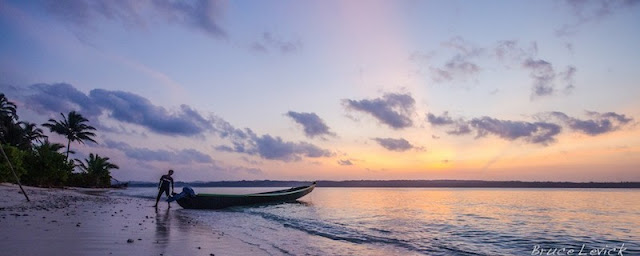Destination : Surf Enggano Island
So
many people are turning to Indonesia now to find the ultimate surf trip.
Indonesia has many great and well known spots to visit for surfing but there
are also some great hidden locations that not many people know about and don’t
have the large tourist crowds. Enggano Island is one of those places.
Enggano is a left-hand reef
break (dead coral bottom) that
works at all points of the tide. This spot in Bengkulu (Indonesia) gets its
best conditions with a south-easterly
breeze and a southerly to westerly
swell. Enggano only starts working with
a swell of around 2ft and can hold shape with swell of up to around 12ft.
Enggano Island is about 100 km
southwest of Sumatra, Indonesia. It is about 35 km long from east to west and
about 16 km wide from north to south. Administratively, it located on the North
Bengkulu Regency. The three largest towns on the island are Barhau, Kabuwe and
Kayaapu.
It
has many great little reefs off the coast to explore for surfing. It’s a good
time of year right now to take advantage of some of those reef breaks off the
coast of Enggano island.
Enggano island is one of the small
island on the West Coast of Sumatra, it lies 45 km in length and width of 17
km. The condition of Enggano island ecosystem is fairly good, compared to other
small islands in Sumatra’s west coast. The only public transport that being
used to reach Enggano is boat, which operated only 2 times a week. While, the
transportation between villages in Enggano is also using boat of ship, due to
land transport facilities have not been supportive.
The name of the island suggests some
early contact with Portuguese traders (engano means disappoint), but the
earliest published account was that of Cornelis de Houtman, dating from June 5,
1596, but he was unable to land a boat.
The indigenous of Enggano Island is
Enggano tribe, which divided into 5 origin of Puak (tribes). All those tribes
speaking in Enggano language. The early puak was inhabiting the island since
Dutch colonialism, in 1934. After Enggano tribe, there are some other tribes
that live in this island, like Kauno tribe, Banten tribe and other four tribes.
By living in 40,2 ha, those people are doing cacao plantation for living and
the productions are being sold to Bengkulu. Enggano island is also has
potential saving and non-timber forest products such as melinjo wood, rattan,
manau, herbs, and seafood. Some of this potential has not been used as an
alternative option for the community because of various obstacles encountered.
How to get there:
To reach this island is easy, which can be start from Bengkulu to Bai port by taking KM Pulo Telo fery boat that regularly operated twice a week. There is also a pioneer boat that sailing from Bengkulu to Enggano, once in 10 days.
To reach this island is easy, which can be start from Bengkulu to Bai port by taking KM Pulo Telo fery boat that regularly operated twice a week. There is also a pioneer boat that sailing from Bengkulu to Enggano, once in 10 days.
Dicky Martijas








Komentar
Posting Komentar